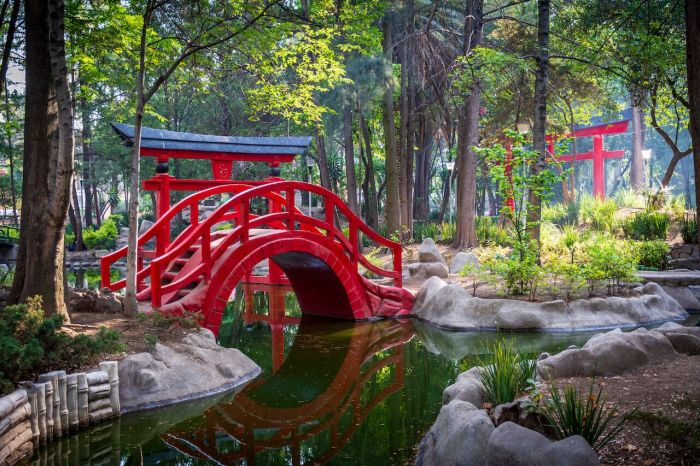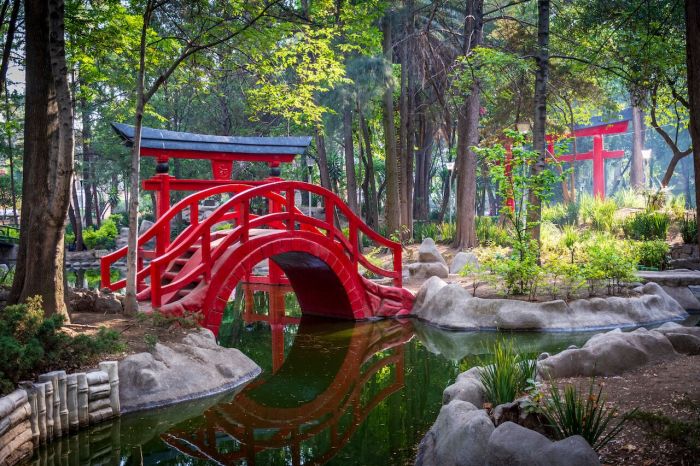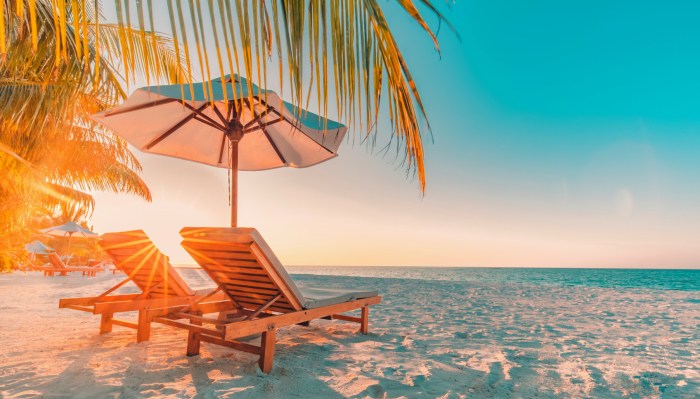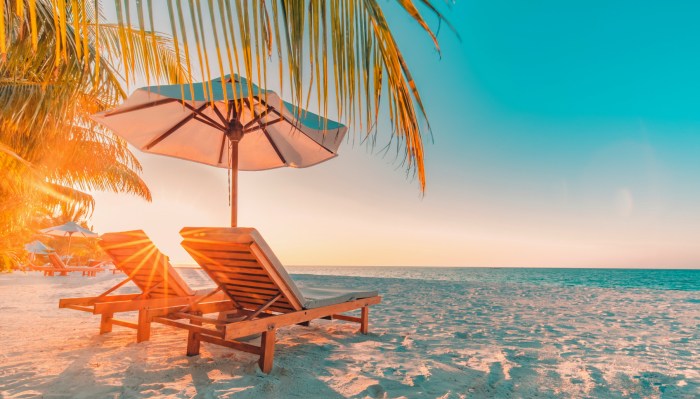Best things to do in Mexico City! From its rich history to its vibrant culture, Mexico City offers a thrilling array of experiences. This guide dives deep into the city’s diverse neighborhoods, highlighting must-see attractions, delicious culinary gems, and unique shopping opportunities. Discover the best ways to explore this captivating metropolis, from its bustling markets to its tranquil parks.
Mexico City’s appeal extends beyond its iconic landmarks. This metropolis pulsates with a vibrant energy that intertwines ancient traditions with modern innovation. Explore the diverse neighborhoods, each with its unique character and charm, and delve into the city’s fascinating history. Prepare to be amazed by the tapestry of culture, cuisine, and experiences awaiting you.
Introduction to Mexico City
Mexico City, the capital of Mexico, is a vibrant metropolis that seamlessly blends ancient history with modern dynamism. Founded on the ruins of Tenochtitlan, the Aztec capital, it has witnessed centuries of transformation, from a powerful indigenous city to a global hub of culture, commerce, and art. Today, it stands as a testament to resilience, innovation, and a unique cultural tapestry.This sprawling city offers a rich and diverse experience, encompassing historical landmarks, bustling markets, world-class museums, and iconic architecture.
Its neighborhoods reflect a fascinating interplay of historical influences, socioeconomic backgrounds, and artistic expressions. Understanding Mexico City’s past and present is crucial to appreciating its complex character and enduring appeal.
Historical Significance
Mexico City’s historical significance stems from its foundation on the site of the ancient Aztec capital, Tenochtitlan. The city’s location, strategically situated on an island in Lake Texcoco, provided a vital trade route and a fertile agricultural environment. The Spanish conquest in the 16th century marked a profound turning point, leading to the destruction of Tenochtitlan and the establishment of Mexico City as the administrative center of the Spanish colonial empire in the Americas.
This period left an indelible mark on the city’s architecture, culture, and societal structures.
Key Facts and Figures
Mexico City boasts a population exceeding 20 million people, making it one of the largest metropolitan areas globally. Its economy is a significant driver of Mexico’s national output, with a vast array of industries, including manufacturing, tourism, and finance. The city’s cultural influence extends far beyond its borders, impacting artistic movements, literature, and culinary traditions throughout Latin America and the wider world.
Diverse Neighborhoods
Mexico City’s neighborhoods display remarkable diversity, reflecting a layered history and diverse population. From the colonial charm of Centro Histórico to the trendy boutiques and restaurants of Roma Norte, each neighborhood tells a story. Condesa, known for its upscale shops and cafes, presents a stark contrast to the bustling markets and traditional crafts of Coyoacán. The historical and cultural significance of each neighborhood is woven into the fabric of the city.
Cultural Hub
Mexico City’s role as a cultural hub is undeniable. The city is home to a vast array of museums, theaters, and galleries, showcasing Mexico’s rich artistic heritage. The annual Guelaguetza festival, celebrating Oaxacan culture, is a vibrant demonstration of Mexico’s cultural diversity, with music, dance, and colorful costumes. Furthermore, Mexico City is a major center for intellectual discourse and artistic innovation, attracting talent and ideas from across the country and the globe.
Key Historical Periods and Impact
| Historical Period | Key Events | Impact on Mexico City |
|---|---|---|
| Pre-Hispanic (Aztec) | Foundation of Tenochtitlan, development of a complex social and political system. | Established the city’s foundation on the island of Texcoco, laid the groundwork for the city’s strategic importance. |
| Spanish Colonial | Conquest of Tenochtitlan, establishment of Mexico City as the colonial capital, introduction of European architectural styles. | Significant changes in architecture, societal structures, and cultural practices, with Spanish influences deeply ingrained in the city’s identity. |
| Independence and Early Republic | Mexican War of Independence, political and social upheavals. | Period of political and social transformation, setting the stage for the modern city. |
| 20th and 21st Centuries | Rapid population growth, industrialization, economic development, and modernization. | Emergence as a major global city, with a complex interplay of urban challenges and opportunities. |
Cultural Experiences
Mexico City pulsates with a vibrant tapestry of cultural experiences, offering a journey through centuries of history and artistic expression. From ancient ruins to contemporary art, the city’s cultural offerings are diverse and captivating. Immerse yourself in the rich traditions, delectable cuisine, and passionate artistic expressions that define this captivating metropolis.The city’s cultural landscape extends far beyond the typical tourist attractions.
It’s a living, breathing entity where ancient traditions intertwine with modern innovations, creating a unique and unforgettable experience for visitors.
Important Cultural Attractions
Mexico City boasts a wealth of historical sites and museums, providing insights into its rich past. These sites showcase the city’s evolution from ancient civilizations to its present-day dynamism. Notable examples include the Templo Mayor, a magnificent archaeological site revealing the grandeur of the Aztec civilization, and the Museo Nacional de Antropología, renowned for its comprehensive collection of pre-Columbian artifacts.
Other significant historical sites and museums further highlight the city’s cultural heritage.
The Arts Scene
Mexico City’s vibrant arts scene thrives on a confluence of traditional and modern influences. The city is a haven for music lovers, hosting a diverse range of performances from traditional mariachi bands to contemporary musical groups. The theatrical scene is equally impressive, featuring both established plays and innovative experimental productions. Dance performances range from traditional folk dances to contemporary ballet and modern choreography.
Traditional Celebrations and Festivals
The city’s calendar is filled with vibrant celebrations and festivals that showcase the country’s rich cultural heritage. These celebrations are an integral part of the city’s social fabric, offering opportunities to experience the local traditions firsthand. The annual Day of the Dead celebrations are particularly noteworthy, involving elaborate altars, parades, and traditional food. Other significant festivals, reflecting the diverse traditions of the country, enrich the city’s cultural tapestry.
Unique Cultural Experiences
Mexico City offers a plethora of unique cultural experiences beyond the typical tourist attractions. These experiences provide deeper insights into the city’s soul. Cooking classes offer a chance to learn the art of preparing authentic Mexican cuisine, immersing participants in the culinary traditions of the region. Folk dance performances provide a glimpse into the rich history and cultural significance of traditional dances, showcasing the artistry and passion of the performers.
Participating in a traditional pottery workshop is another unique experience, offering a hands-on engagement with the crafts and artistic expressions of Mexico.
Comparison of Art Forms
| Art Form | Description | Key Characteristics | Example |
|---|---|---|---|
| Traditional Mexican Music (Mariachi) | A musical genre that often features trumpets, violins, and guitars. | Typically celebratory, using instruments like violins, trumpets, and guitars. Often associated with special occasions. | A mariachi band performing at a restaurant. |
| Contemporary Visual Arts | Modern and contemporary art, from paintings to sculptures. | Explores themes of modern life, often using innovative techniques and styles. | A contemporary art exhibition at a gallery. |
| Traditional Folk Dance | Dances reflecting regional and cultural traditions. | Explores themes related to local history, stories, and events. | A performance of the traditional Jarabe Tapatío dance. |
Food and Drink
Mexico City’s culinary scene is a vibrant tapestry woven from threads of tradition and innovation. From the bustling street food stalls to the elegant fine-dining restaurants, the city offers a diverse and delicious array of experiences. The deep-rooted cultural significance of food in Mexican society is palpable in every dish, from the simple street tacos to the elaborate mole preparations.
This section will explore the city’s diverse culinary landscape, highlighting popular restaurants, food markets, and local traditions.Mexico City’s culinary scene is a dynamic mix of global influences and authentic Mexican traditions. The city’s vibrant street food culture is a testament to this fusion. From tacos al pastor to esquites, the flavours are bold and diverse, reflecting the country’s rich history and cultural tapestry.
Popular Restaurants and Food Markets
Mexico City boasts a plethora of exceptional restaurants, catering to various tastes and budgets. From renowned chefs to casual eateries, the city’s culinary offerings are truly diverse. For authentic Mexican cuisine, try Contramar, a seafood haven, or La Buena Onda, known for its delicious tacos. If you crave international flavours, consider trying a Michelin-starred restaurant or a traditional taqueria.For a taste of local life, visit the Mercado de San Juan, a bustling market brimming with fresh produce, meats, and artisanal goods.
The aromas and sights of the market are a feast for the senses. The Mercado de Coyoacán offers a similar experience, providing a more authentic local experience with traditional Mexican cuisine. The Mercado de Garibaldi, on the other hand, is a hub for street food and regional specialties.
Types of Mexican Cuisine
Mexican cuisine encompasses a wide array of regional specialties, each with its unique flavour profile and preparation methods. Understanding these differences allows for a deeper appreciation of the country’s rich culinary heritage.
- Tacos: Tacos are a cornerstone of Mexican cuisine, offering a diverse range of fillings, from al pastor to carnitas, fish, and vegetables. They are typically served in corn or wheat tortillas and represent a flexible and popular form of food.
- Mole: Mole is a complex and flavourful sauce, often used as a topping for chicken, turkey, or vegetables. Different regions have their own variations, making it a true testament to the culinary diversity of Mexico. The preparation process is intricate and often involves numerous ingredients, creating a unique and rich flavour profile.
- Enchiladas: Enchiladas are corn tortillas filled with various ingredients and covered in a rich sauce, often a variant of mole. Their variety demonstrates the creativity and adaptability of Mexican cooking.
- Pozole: Pozole is a hearty soup featuring hominy and often meat, such as pork or chicken. It’s a staple in Mexican cuisine, particularly during special occasions.
Importance of Food in Mexican Culture
Food plays a central role in Mexican culture, often serving as a symbol of family, community, and celebration. Sharing meals together is a deeply ingrained tradition, fostering connections and strengthening bonds. This is a reflection of the importance of food in Mexican culture, emphasizing its social and emotional significance.
Local Food Traditions and Customs
Many local traditions and customs are centred around food. Picnics in parks, family gatherings around the dinner table, and celebrations often revolve around food. This emphasis on communal dining demonstrates the importance of shared experiences and reinforces social ties.
Types of Beverages
Mexico City offers a wide range of beverages, from traditional aguas frescas to craft beers and internationally renowned coffees. Aguas frescas, refreshing fruit drinks, are a popular choice for a thirst quencher, and are often sold at street stalls. The city also offers a growing selection of craft beers, reflecting the country’s increasing interest in artisanal beverages.
| Cuisine Type | Key Ingredients | Flavor Profile | Regional Origin |
|---|---|---|---|
| Tacos | Tortillas, meat, vegetables, sauces | Savory, diverse depending on filling | Throughout Mexico |
| Mole | Chiles, spices, nuts, chocolate | Rich, complex, smoky | Central Mexico |
| Enchiladas | Tortillas, filling, sauce | Savory, rich, depending on sauce | Throughout Mexico |
| Pozole | Hominy, meat, spices | Hearty, flavorful, comforting | Throughout Mexico |
Shopping and Markets
Mexico City’s vibrant shopping scene caters to every taste and budget, from high-end boutiques to bustling local markets. Whether you’re seeking unique souvenirs, handcrafted treasures, or designer goods, the city offers a plethora of options. The shopping experience is deeply intertwined with the city’s rich culture and economic fabric, reflecting its diverse heritage and traditions.The shopping experiences in Mexico City range from the sophisticated atmosphere of upscale malls to the vibrant energy of traditional markets.
These spaces showcase the craftsmanship and artistry of Mexican artisans, offering a window into the country’s cultural heritage. From the iconic artisan stalls to the modern boutiques, the city’s shopping scene provides a rich tapestry of experiences.
Upscale Boutiques and Malls
Mexico City boasts a number of upscale shopping destinations, including exclusive boutiques and modern malls. These locations cater to a discerning clientele, offering a variety of international brands and high-end designer pieces. High-end fashion houses and exclusive jewelry stores often feature in these spaces.
Local Markets and Traditional Shopping
The heart of Mexico City’s shopping experience lies in its vibrant and colorful local markets. These bustling marketplaces are a sensory feast, filled with the sights, sounds, and smells of local produce, handicrafts, and everyday items. Markets like Mercado de San Juan are famous for their lively atmosphere and unique selection of goods.
Unique Shopping Experiences in Specific Districts
Different neighborhoods in Mexico City offer distinct shopping experiences. The Roma Norte neighborhood, for instance, is known for its charming boutiques and artisan workshops, offering a curated selection of handcrafted items. Condesa, another popular area, features a blend of trendy shops and vintage finds, alongside contemporary boutiques.
Souvenirs and Unique Items
Mexico City provides an excellent opportunity to find unique souvenirs. From handcrafted pottery and textiles to intricately designed jewelry and colorful artwork, the markets offer a wide range of options. You can find items reflecting the country’s rich history and traditions. Consider purchasing locally-produced artisanal items to support local communities and artisans.
Craft Traditions and Their Economic Role
Mexican crafts have a long and storied tradition, playing a significant role in the country’s economy. The craft traditions are often passed down through generations, with families maintaining their unique skills and techniques. The sale of these goods provides a vital income source for many artisans and their families. These crafts often incorporate indigenous motifs and techniques.
Mexico City is buzzing with incredible experiences! From exploring ancient ruins to indulging in delicious street food, there’s a vibrant energy everywhere. While exploring the city’s incredible history and culture, you might be interested in learning about the Zeabuz water ferry system in Norway. This fascinating mode of transport, like the zeabuz water ferry norway , offers a unique way to navigate the fjords.
Back in Mexico City, don’t miss the chance to immerse yourself in the city’s captivating museums and lively markets.
Online Shopping Options
Online shopping in Mexico City is steadily growing, offering a convenient way to browse and purchase various items, from clothing to home goods. Online marketplaces and e-commerce platforms offer a wider selection and often competitive pricing, as well as ease of access for those in other parts of the country or internationally.
Shopping Districts and Specialties
| Shopping District | Specialties |
|---|---|
| Roma Norte | Charming boutiques, artisan workshops, handcrafted items |
| Condesa | Trendy shops, vintage finds, contemporary boutiques |
| Centro Histórico | Historic markets, traditional crafts, souvenirs |
| Mercado de San Juan | Livelihood, local products, fresh produce |
Outdoor Activities and Parks
Mexico City, a vibrant metropolis, surprisingly boasts a wealth of green spaces that offer respite from the urban hustle. These parks and outdoor areas are crucial for the well-being of its residents, providing opportunities for recreation, relaxation, and connection with nature. Beyond the city center, day trips to surrounding areas unveil stunning landscapes and historical sites.Mexico City’s commitment to preserving its natural spaces is evident in the ongoing efforts to maintain and enhance these areas, providing residents and visitors alike with access to quality outdoor experiences.
This commitment underscores the importance of urban green spaces in fostering a healthy and sustainable city environment.
Popular Parks and Green Spaces
Mexico City is home to numerous parks, ranging from sprawling urban oases to smaller neighborhood gems. Chapultepec Park, the largest, offers a wide array of activities, from picnicking and strolling to visiting museums and zoos. Other noteworthy parks include Bosque de Chapultepec, a lush expanse featuring trails for walking, jogging, and cycling. These parks are vital for providing residents with spaces for recreation and relaxation.
Mexico City boasts incredible history and vibrant culture, from exploring ancient ruins to indulging in delicious street food. However, if you’re worried about the crowds plaguing US National Parks, like you’ll find at overcrowding at us national parks , then you might want to consider the less-trafficked, yet equally amazing, options Mexico City has to offer. Immerse yourself in the city’s rich tapestry of experiences!
Furthermore, smaller parks scattered throughout the city contribute to a sense of community and offer respite in densely populated areas.
Outdoor Recreation Opportunities
Opportunities for outdoor recreation abound in Mexico City. Hiking and biking are popular activities, with well-maintained trails winding through the city’s parks and surrounding mountains. Chapultepec Park, in particular, has dedicated paths for both activities, making it a favorite destination for fitness enthusiasts. The parks offer a refreshing escape from the city’s concrete jungle.
Preservation Efforts
The city government actively works to preserve and enhance its green spaces. Efforts include maintaining existing parks, planting trees, and creating new green areas in urban development projects. These initiatives underscore the city’s commitment to providing its citizens with access to healthy, natural environments. Furthermore, community groups and organizations play a vital role in advocating for the preservation of these precious urban oases.
Importance of Outdoor Spaces in Urban Life
Urban parks and green spaces play a crucial role in the overall quality of life in Mexico City. They provide opportunities for physical activity, relaxation, and social interaction. These spaces offer a vital escape from the pressures of city life, fostering a sense of calm and well-being. They also serve as vital ecological corridors, helping to maintain biodiversity in the urban environment.
Green spaces significantly contribute to the mental and physical health of city dwellers.
Day Trips Outside the City Center
For those seeking a deeper connection with nature, day trips outside the city center offer a wealth of options. The surrounding areas boast picturesque landscapes, historical sites, and opportunities for exploration. Day trips can be tailored to different interests, from exploring ancient ruins to enjoying scenic mountain vistas.
Parks and Their Features
| Park Name | Features |
|---|---|
| Chapultepec Park | Extensive grounds, museums, zoo, gardens, jogging trails, biking paths, numerous activities. |
| Bosque de Chapultepec | Lush greenery, walking trails, jogging paths, and bike paths. |
| Parque México | Large open space, suitable for picnics, children’s activities, and outdoor events. |
| Parque España | Relaxing atmosphere, ideal for strolling and enjoying the tranquility. |
Accommodation Options

Mexico City offers a diverse range of accommodation options to suit every traveler’s needs and budget. From bustling hostels to luxurious resorts, you’ll find a place to call home while exploring the vibrant city. Choosing the right accommodation is crucial for a comfortable and enjoyable experience, as it directly impacts your interactions with the city and its culture. Consider the location, amenities, and price point when making your decision.A key factor in selecting accommodation is its proximity to key attractions.
A hotel near the historical center, for example, will provide easy access to iconic landmarks, while a hostel in a trendy neighborhood might be ideal for social interaction and experiencing the local scene. The variety of options allows travelers to tailor their experience to their individual preferences and budget.
Exploring Mexico City is amazing, from vibrant markets to historical sites. But if you’re looking for a different kind of adventure, check out activities beyond the typical tourist trails, like those found on the Camino de Santiago. camino de santiago activities beyond the trails offer a unique perspective on the region, and can even inspire some of the best things to do in Mexico City, like exploring its rich culture and history.
Ultimately, Mexico City has something for everyone.
Budget-Friendly Options
Budget-friendly options, like hostels, are excellent for solo travelers or groups looking for cost-effective accommodation. These often provide communal spaces, enabling travelers to connect with others and share experiences. Many hostels offer amenities like free Wi-Fi, kitchens, and common areas. They are a popular choice for budget-conscious travelers seeking a social atmosphere. Examples include hostels in the Condesa or Roma neighborhoods, known for their vibrant nightlife and cultural offerings.
Mid-Range Hotels
Mid-range hotels provide a balance between affordability and amenities. They often feature comfortable rooms, convenient locations, and basic services like breakfast or Wi-Fi. These options are ideal for travelers seeking a comfortable stay without breaking the bank. They frequently provide a good compromise between cost and quality, offering a step up from budget-friendly hostels while still remaining reasonably priced.
Many hotels in the Polanco or Centro Histórico areas fall into this category.
Luxury Accommodations, Best things to do in mexico city
Luxury resorts in Mexico City offer unparalleled comfort and extravagant amenities. These hotels frequently boast stunning views, exceptional service, and high-end facilities. They cater to discerning travelers seeking a truly unforgettable experience. The upscale accommodations in these resorts often include lavish spas, gourmet restaurants, and meticulously designed rooms. Examples of luxury hotels in Mexico City include the Four Seasons Hotel Mexico City and the St.
Regis Mexico City.
Unique Accommodations
Beyond traditional hotels, Mexico City offers a range of unique accommodation options. Boutique hotels often have a distinct style and character, reflecting the local culture and history. These hotels typically feature smaller, more intimate settings, often with unique design elements. Airbnb options also provide a diverse range of experiences, from charming apartments to entire houses. These options allow travelers to immerse themselves in the local culture and enjoy a more personal experience.
Comparison Table of Lodging Options
| Category | Description | Price Range | Amenities | Traveler Type |
|---|---|---|---|---|
| Budget-Friendly Hostels | Communal spaces, basic rooms | Very Affordable | Wi-Fi, kitchens, common areas | Solo travelers, groups, backpackers |
| Mid-Range Hotels | Comfortable rooms, convenient locations | Moderate | Breakfast, Wi-Fi, basic services | Couples, families, business travelers |
| Luxury Resorts | Stunning views, exceptional service, high-end facilities | High | Lavish spas, gourmet restaurants, meticulously designed rooms | Discerning travelers, luxury seekers |
| Boutique Hotels | Distinct style, intimate settings | Moderate to High | Unique design elements, personalized service | Culture enthusiasts, design aficionados |
| Airbnb | Apartments or houses, local immersion | Variable | Kitchen, living area, often local character | Families, groups, those seeking local experience |
Transportation: Best Things To Do In Mexico City
Mexico City’s sprawling metropolis demands a robust and adaptable transportation system. Navigating the city’s intricate network requires understanding the various options available, from the efficient public transit to the convenience of ride-sharing services. Choosing the right mode depends on factors like budget, time constraints, and desired level of comfort.Mexico City’s transportation system is a complex mix of public and private options.
Each mode offers a unique experience and a varying level of efficiency and cost-effectiveness. Understanding these differences allows travelers to make informed decisions.
Public Transportation
Mexico City’s extensive public transportation system is the lifeblood of the city, connecting millions of people daily. This system comprises a robust network of buses, the Metro, and the Metrobús. Understanding how to use these systems is key to efficient travel.
- Metro: The Metro system is a comprehensive underground railway network that spans vast areas of the city, making it a fast and efficient way to travel between distant points. Its extensive network covers many key destinations, and the relatively low cost compared to other options makes it a popular choice for budget-conscious travelers. Consider using the metro to get to your hotel in the morning or the airport.
- Metrobús: This dedicated bus system offers a quick and convenient way to navigate specific corridors across the city. It’s often faster than regular buses and more efficient for longer journeys within a particular area.
- Buses: The bus system is vast and connects numerous neighborhoods and areas that the metro and Metrobús do not. However, its efficiency can vary depending on the route and time of day, and travel time can be longer than other options. The cost is usually the lowest compared to the other methods.
Taxis
Taxis are another common mode of transportation in Mexico City. While they can be convenient, it’s crucial to understand the nuances of hailing and negotiating fares to avoid potential issues.
- Regular Taxis: Regular taxis are readily available but require careful negotiation of fares to ensure fair pricing. It is advisable to use a reputable taxi company or apps for fare transparency.
- Formal Taxis: Formal taxis, usually with a designated taxi company logo, are known for having pre-determined fares and better service. These are a good choice for a quick and reliable trip.
Ride-Sharing Services
Ride-sharing services like Uber and Cabify have become increasingly popular in Mexico City. They offer a convenient way to get around the city, with readily available vehicles and app-based booking.
- Convenience: Ride-sharing services are incredibly convenient, allowing for real-time tracking and quick booking. The ability to book a ride from anywhere in the city is a significant advantage.
- Cost: While generally affordable, ride-sharing costs can vary depending on traffic conditions and distance. It’s helpful to factor this into travel plans.
Navigating the Public Transportation System
Navigating the public transportation system requires familiarity with the various lines and routes. Understanding the different types of tickets and payment methods is also essential.
- Purchasing Tickets: Mexico City offers various options for purchasing tickets, including individual tickets, cards, and passes. The choice depends on the length and frequency of travel. Pre-purchasing tickets or using an electronic payment system is often more efficient than buying at each stop.
- Using the Map: Utilizing the official metro map and app for the public transit system is essential. These maps provide a clear visual representation of the network and routes, which is useful for planning and understanding the city’s layout.
Transportation Challenges and Solutions
Mexico City, like many large metropolitan areas, faces challenges in its transportation system, including congestion and infrastructure limitations. However, there are solutions to these issues, including ongoing investments in public transit and better traffic management.
- Congestion: Traffic congestion can significantly impact travel times. Implementing strategies like improved traffic flow management and dedicated bus lanes can help alleviate this issue.
- Infrastructure Limitations: Addressing infrastructure limitations, such as expanding the metro system or improving road networks, can lead to a more efficient and comprehensive transportation system.
Comparison of Transportation Options
| Transportation Option | Efficiency | Cost | Convenience |
|---|---|---|---|
| Metro | High | Low | High |
| Metrobús | High | Low | High |
| Buses | Moderate | Low | Moderate |
| Taxis (Formal) | Moderate | Moderate | Moderate |
| Taxis (Regular) | Moderate | Low | Moderate |
| Ride-Sharing Services | High | Moderate | High |
Safety and Security
Mexico City, a vibrant metropolis, offers incredible experiences, but it’s essential to be mindful of safety precautions. Understanding the city’s dynamics and taking proactive steps can significantly enhance your enjoyment and peace of mind. This section provides crucial information to navigate the city safely and securely.General safety concerns in Mexico City include petty theft, particularly in crowded areas like tourist hotspots and public transportation.
Awareness of your surroundings and belongings is paramount. While serious crime is not common in well-lit, populated areas, vigilance is always recommended.
General Safety Precautions
Taking proactive steps to ensure personal safety is crucial for a positive experience. These steps will help you minimize potential risks and maintain a safe environment throughout your visit.
- Be aware of your surroundings. Pay attention to your belongings, especially in crowded areas, and keep your valuables secure.
- Avoid displaying expensive jewelry or electronics in public places.
- Use reputable taxis or ride-sharing services, and verify the driver’s information before entering.
- Be cautious of strangers approaching you with offers or requests.
- Inform your hotel or accommodation about your itinerary, including any late-night activities.
Staying Vigilant in Crowded Areas
Crowded areas, such as markets and tourist attractions, require heightened vigilance. Staying alert and aware of your surroundings can help mitigate potential risks.
- Maintain a watchful eye on your belongings, especially purses and bags.
- Keep valuables close to your body.
- Avoid walking alone in dimly lit or isolated areas.
- If approached by a stranger, politely decline any offers or requests and move away.
- Avoid displaying expensive items, such as cameras or high-end phones.
Local Perspectives on Safety
Understanding the local perspective on safety provides valuable insights into navigating the city. Locals often recommend staying aware of your surroundings and taking precautions to minimize risks.
“In Mexico City, personal safety is a matter of being mindful and proactive. Avoiding isolated areas and keeping your valuables close can significantly reduce potential risks.”
Local resident interview
Local Support Systems for Tourists
Mexico City offers various support systems for tourists, providing assistance and resources. Knowing these resources can be helpful in case of emergencies.
- Many hotels and tour operators can provide information on local safety concerns and offer assistance if needed.
- The local police department and tourist information centers can offer guidance and support.
- Contacting your embassy or consulate is crucial in case of an emergency or if you need assistance with repatriation.
Tips for Staying Safe in the City
These tips provide a comprehensive overview of safety precautions for a safe and enjoyable experience.
| Category | Tips |
|---|---|
| Personal Belongings | Keep valuables close to your body, avoid displaying expensive items, and be cautious of pickpockets. |
| Transportation | Use reputable taxis or ride-sharing services, and verify driver information before entering. Avoid walking alone at night. |
| Crowded Areas | Maintain awareness of your surroundings, keep your belongings secure, and avoid isolated areas. |
| General Awareness | Be mindful of your surroundings, avoid displaying expensive items, and politely decline offers or requests from strangers. |
| Emergencies | Inform your hotel or accommodation about your itinerary, and know how to contact your embassy or consulate. |
Final Thoughts

In conclusion, Mexico City offers a truly unforgettable experience. Whether you’re a history buff, a foodie, or an adventurer, you’ll find something to captivate you. From the grandeur of its historical sites to the delicious tastes of its cuisine, and the vibrant energy of its markets, the best things to do in Mexico City cater to every interest.
This guide provides a roadmap to uncover the treasures hidden within this remarkable city.



























